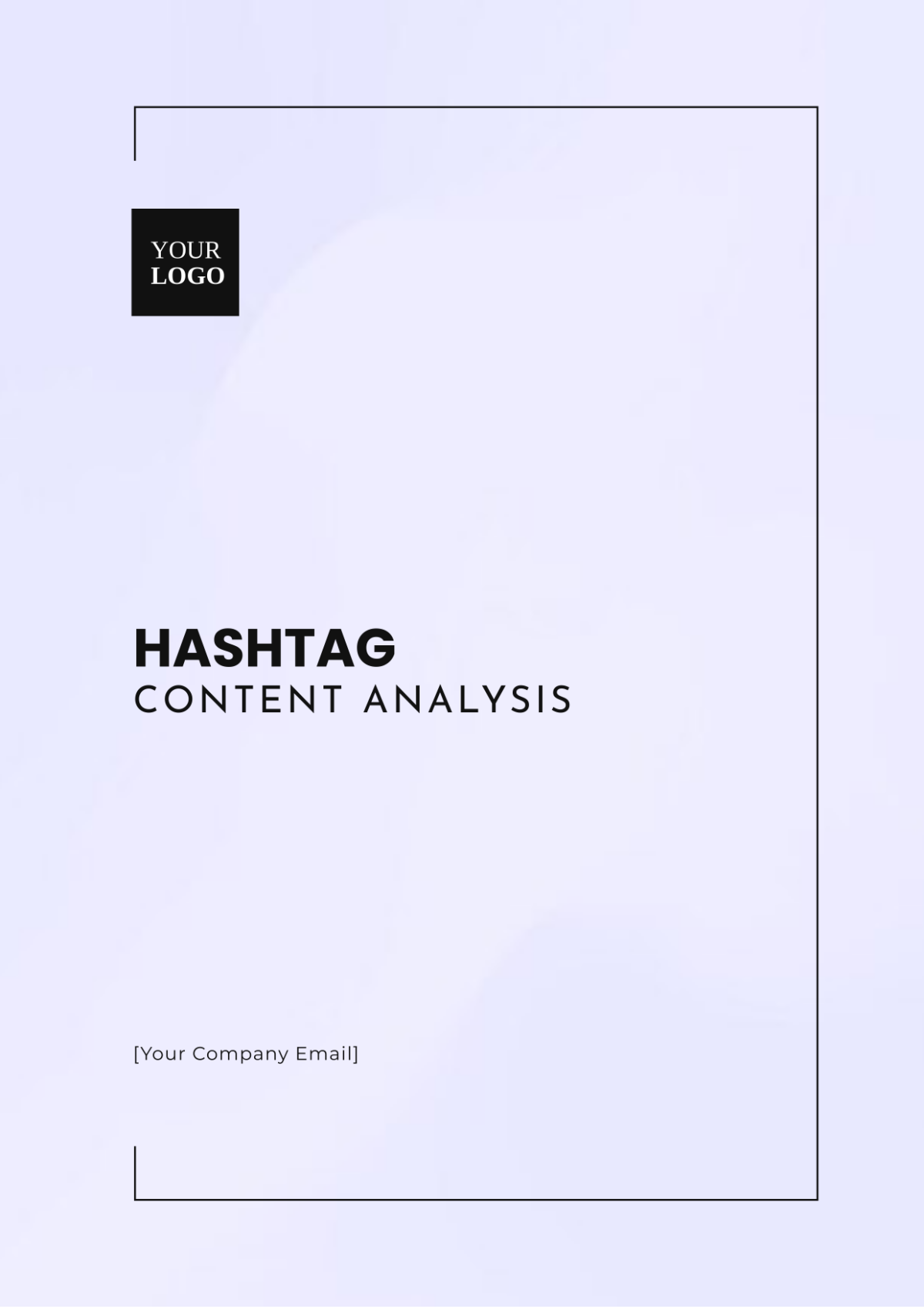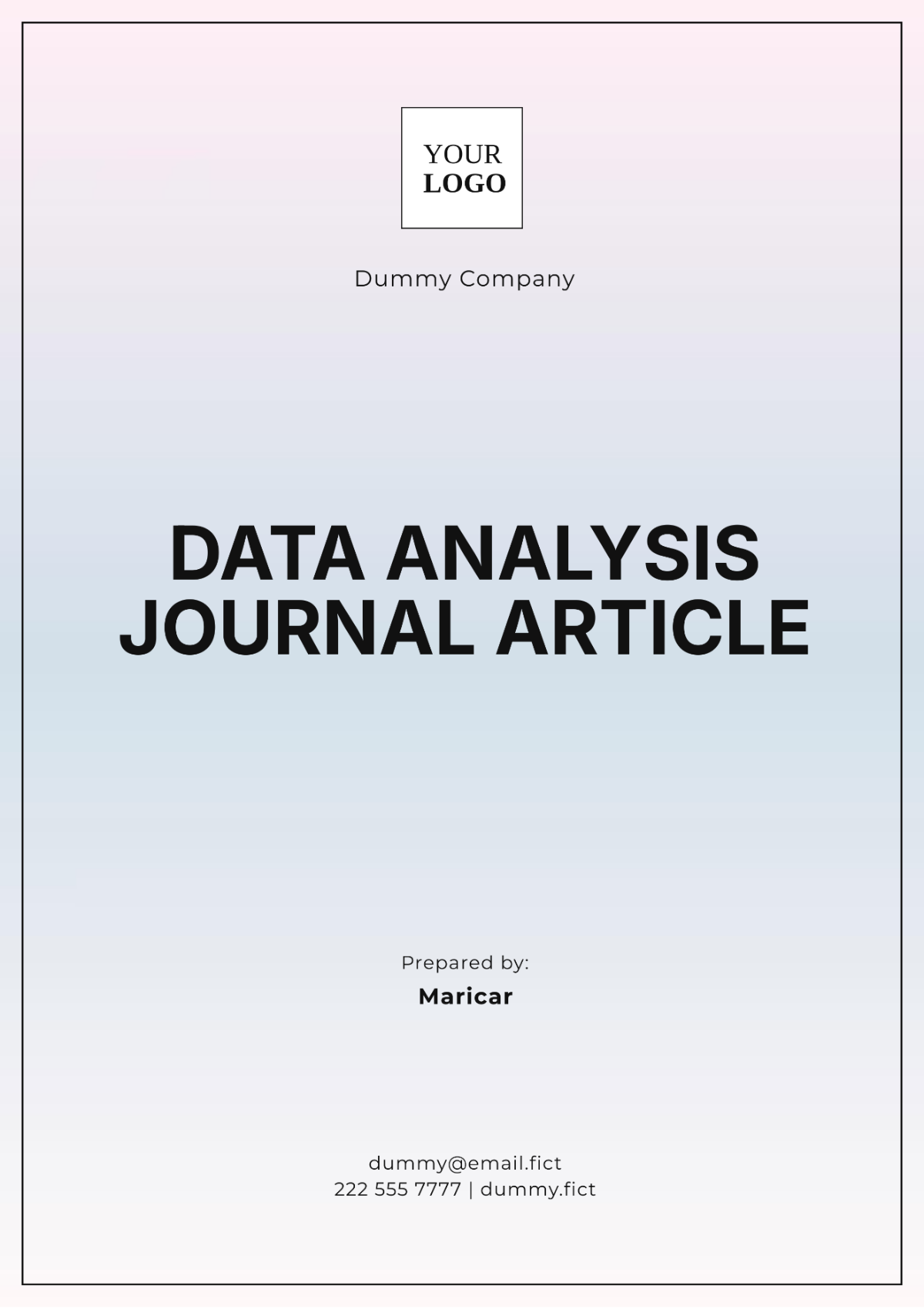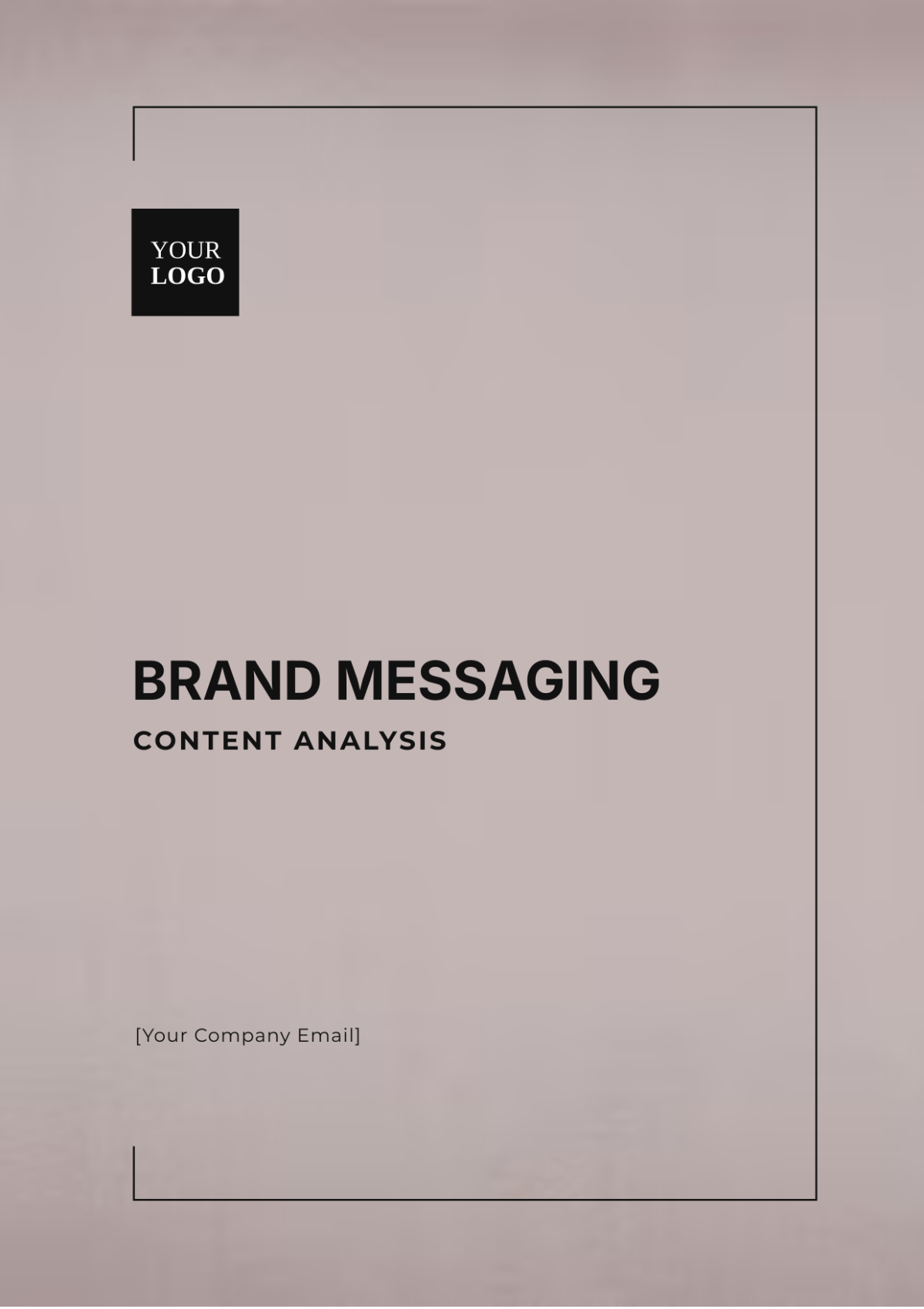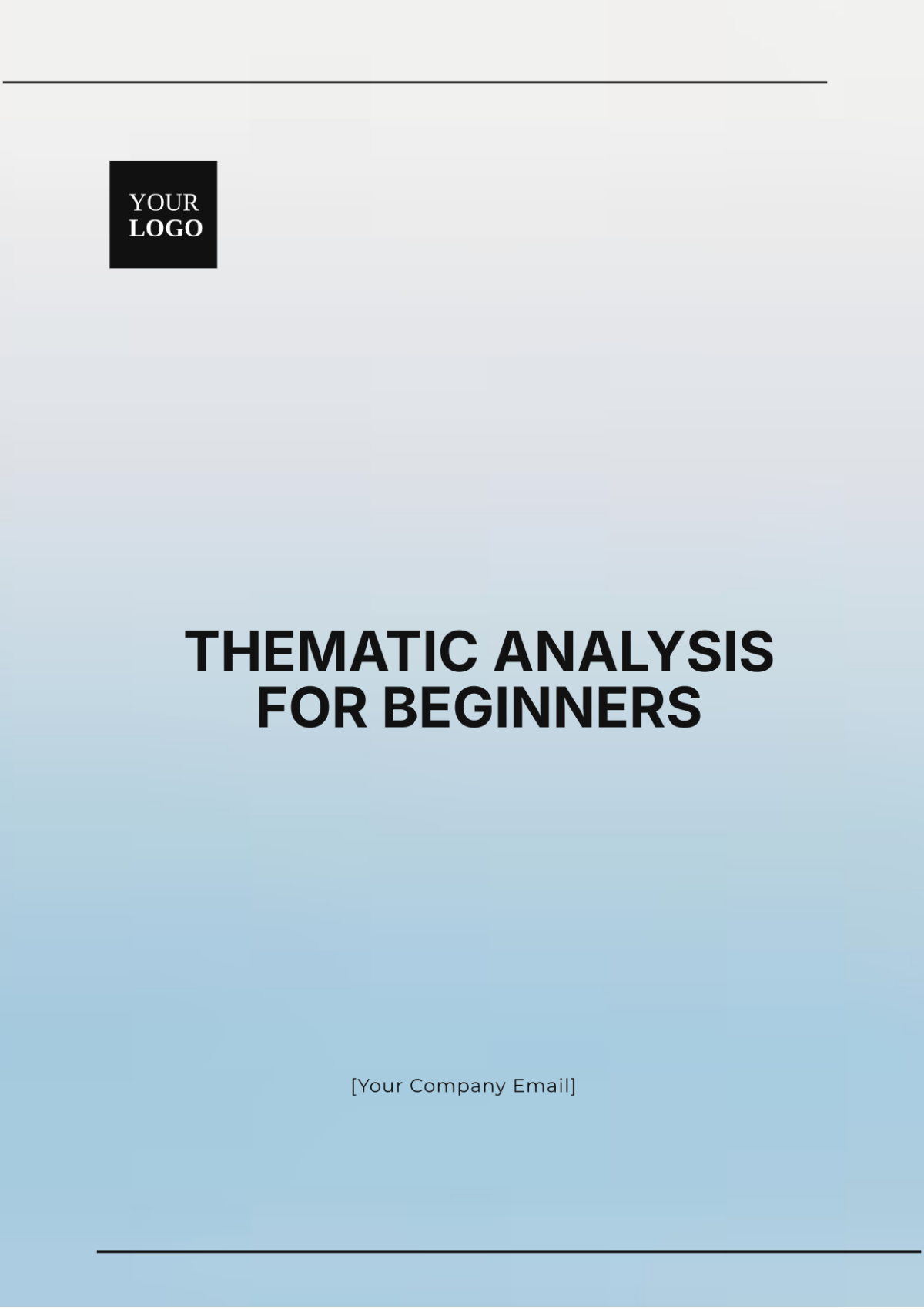Online Store Analysis Report
I. Executive Summary
[Your Company Name]'s report provides a comprehensive analysis of the online store's performance over the past quarter. The main points to note encompass a [00] percent increase in website traffic, a stable conversion rate, and an enhancement in product sales, with significant growth observed specifically in the home goods category. The subsequent sections provide in-depth insights and practical recommendations designed to continue strengthening the overall performance of the store.
II. Traffic Analysis
A. Total Website Visitors
Period | Total Visitors | Organic Traffic | Paid Traffic | Social Media Traffic | Referral Traffic |
|---|---|---|---|---|---|
January | 50,000 | 35,000 | 7,000 | 5,000 | 3,000 |
The total number of visitors to the website has steadily increased over the past three months, growing from 50,000 in January to 60,000 in March. Organic traffic remains the largest contributor, showing a consistent increase. Paid traffic has also been growing, indicating the effectiveness of ongoing advertising campaigns.
B. Audience Demographics
Our audience analysis reveals a strong presence from users aged 25-44, accounting for [00]% of total visitors. Geographically, the majority of visitors come from the United States, followed by Canada and the UK. This data is valuable for refining marketing strategies and targeting more specific customer groups.
C. Bounce Rate and Engagement Metrics
The bounce rate has decreased by [00]% from January to March, indicating an improvement in user engagement. The average session duration has increased from 2 minutes 15 seconds to 2 minutes 45 seconds over the last quarter. Users are spending more time on the website, exploring multiple pages before exiting, suggesting better content and design.
III. Conversion Rate & Sales Performance
A. Overall Conversion Rate
Period | Conversion Rate | Industry Benchmark | Conversion Funnel (Visitors to Sales) |
|---|---|---|---|
January | 2.5% | 2.0% | 50,000 Visitors → 1,250 Sales |
The conversion rate has improved from [00]% in January to [00]% in March, surpassing the industry benchmark of [00]%. This indicates that our website optimizations and user experience improvements are having a positive effect on converting visitors into customers. The conversion funnel also shows a significant increase in sales volume.
B. Sales Trends
Period | Total Sales | Average Order Value (AOV) | Sales by Category |
|---|---|---|---|
January | $100,000 | $50 | Home Goods: $40,000 Clothing: $35,000 Electronics: $25,000 |
Sales have increased steadily each month, reaching $[00] in March. The average order value (AOV) has also risen from $[00] to $[00], showing that customers are purchasing more per transaction. The home goods category continues to perform strongest, contributing significantly to total revenue.
C. Product Category Performance
Home goods have outperformed other categories, experiencing a [00]% increase in sales each month. Clothing sales have remained stable, while electronics saw a surge in March due to a successful promotion. Further analysis is needed to adjust marketing efforts and stock levels for underperforming categories.
IV. User Behavior & Site Performance
A. User Flow Analysis
The most common landing pages are the homepage, product category pages, and the promotional landing pages for special offers. However, many users exit the product pages without completing a purchase, particularly in the electronics category. This drop-off is an area for improvement in the conversion funnel.
B. Cart Abandonment Rate
The cart abandonment rate has been consistently around [00]% for the past three months. Analysis suggests that the primary reasons for abandonment are high shipping costs and a lengthy checkout process. Addressing these issues through free shipping promotions and streamlining the checkout process could reduce abandonment.
C. Website Performance & Technical Issues
The website load speed has improved slightly from 4.5 seconds to 3.8 seconds in the past quarter, enhancing the user experience. Mobile responsiveness remains a priority, as more than [00]% of traffic comes from mobile devices. There have been minor technical issues, such as occasional 404 errors, that have been resolved promptly.
V. Product Performance & Inventory
A. Top-Performing Products
Our best-selling product is the [Product Name], which saw a [00]% increase in sales last month due to an effective promotion. Other top performers include eco-friendly kitchen products and seasonal décor items. These products have consistently driven high sales volumes and positive customer feedback.
B. Low-Performing Products
Several electronics products, including a line of budget headphones, have shown disappointing sales. According to customer feedback, these products are perceived to be deficient in particular features when compared to those offered by competitors. This perception has resulted in diminished consumer interest. Consequently, it may become necessary to either undertake a redesign of the products or implement a discount strategy as potential measures to encourage the sale of the remaining inventory.
C. Product Pricing & Promotions
Price adjustments for popular items like [Product Name] have led to a [00]% increase in sales without negatively affecting margins. Promotions, especially those featuring bundle offers, have been shown to be highly effective in increasing sales. Nonetheless, it is necessary to conduct a more thorough analysis in order to refine pricing strategies for products that tend to have slower sales trajectories.
VI. Customer Experience & Satisfaction
A. Customer Feedback and Reviews
The average product rating is 4.2 stars out of 5, with most customers praising product quality and delivery speed. Negative reviews generally tend to concentrate on problems related to delivery delays or issues connected with packaging. By focusing on these areas of concern and working to resolve these specific problems, it is possible to enhance the overall satisfaction of customers and diminish the amount of negative feedback received.
B. Customer Service Performance
The average response time for customer inquiries has improved from 24 hours to 12 hours in the last quarter. According to the results of customer satisfaction surveys, the average satisfaction score achieved is [00] percent. A significant number of customers have praised the support team for their helpfulness. However, it has been suggested that providing further training to the team could enhance both the speed and consistency of the service offered.
C. Net Promoter Score (NPS)
The Net Promoter Score (NPS) has risen from 30 to 40 over the past three months, reflecting higher customer satisfaction. Customers are highly inclined to recommend our store to others primarily due to the wide variety of products we offer and the efficiency of our shipping service. In order to sustain this momentum and continue growing, it is essential for us to place additional emphasis on improving the experiences that customers have after they make a purchase.
VII. Marketing & SEO Performance
A. SEO Performance
Organic traffic has been growing steadily, driven by improved keyword rankings in major product categories. The website has achieved an impressive ranking by appearing within the top three search results when users search for high-priority keywords, such as "eco-friendly kitchen products." To build on this success, continuous search engine optimization efforts will be directed towards broadening the range of keywords the site targets and enhancing the optimization of individual product pages.
B. Paid Advertising Campaigns
Paid search campaigns have generated a [00]% return on ad spend (ROAS) in the past quarter, with Google Ads performing the best. Social media ads also saw a strong click-through rate (CTR) of [00]%, though they resulted in a lower conversion rate. Reallocating some budget from social ads to Google search may improve overall ROI.
C. Email Marketing Performance
Email open rates have averaged [00]%, with click-through rates (CTR) at [00]%. Sales generated from email campaigns have accounted for [00]% of the total revenue on a monthly basis, especially noticeable during periods of promotions. By segmenting the email lists more effectively, there is potential to enhance engagement and conversion rates.
D. Social Media Performance
Social media engagement has increased by [00]% over the last quarter, with Instagram being the top-performing platform. Social media campaigns that highlighted the introduction of new products and offered special promotions tied to the seasons have achieved notable success. By expanding collaborations with influencers, it is possible to further enhance website traffic and boost conversion rates to a greater extent.
VIII. Competitor Analysis
A. Market Comparison
Compared to key competitors, our online store ranks slightly higher in traffic but lags in conversion rate. Our competitors are providing more substantial discounts and improved loyalty programs, which might account for their increased conversion rates. By enhancing our own loyalty program, we could potentially retain more customers and increase our conversion rates.
B. Competitor Strengths and Weaknesses
Competitors excel in offering free shipping and next-day delivery options, areas where our store can improve. While our current pricing strategy is designed to be competitive within the market, it is important to acknowledge that our competitors provide a more extensive selection of products that are in high demand. To enhance our competitive position, we should consider shifting our focus towards offering exclusive product ranges that are not available elsewhere. Additionally, improving the speed of our shipping services could further strengthen our market position and attract more customers.
IX. Financial Overview
A. Revenue Breakdown
Revenue has steadily increased, with home goods contributing the largest share ([00]%). While electronics and clothing are showing significant traction and are close contenders, home goods continue to be the most prominent and commanding category. It is advisable to adjust inventory and promotional efforts to align more closely with this leading category.
B. Operational Costs
Shipping and fulfillment costs have increased by [00]%, primarily due to rising fuel prices and expanded delivery options. The expenditure on marketing has remained stable; however, there has been a noteworthy enhancement in the return on investment (ROI) from paid advertisements. To ensure the continued health of profit margins, it is essential to implement measures aimed at controlling costs related to shipping and fulfillment.
C. Return on Investment (ROI)
The overall ROI for marketing campaigns stands at [00]%, with email campaigns providing the best returns. Promotional activities for products, such as special offers and limited-time discounts, have resulted in substantial financial returns, especially within product categories that yield high profit margins. Continual monitoring and analysis of the return on investment from these initiatives will assist in fine-tuning and optimizing future marketing strategies.
X. Recommendations & Action Plan
A. Short-Term Recommendations
Optimize the checkout process to reduce cart abandonment.
Offer limited-time free shipping to boost conversion rates.
Address mobile responsiveness issues on certain devices.
B. Long-Term Strategic Initiatives
Develop exclusive product lines for home goods to capture more market share.
Strengthen the loyalty program to increase customer retention and repeat sales.
Expand paid advertising efforts on Google and reduce reliance on social media ads.
C. Key Performance Indicators (KPIs) for Next Period
Achieve a [00]% increase in conversion rate.
Grow organic traffic by [00]% through SEO improvements.
Increase average order value by [00]% through targeted promotions.

















































